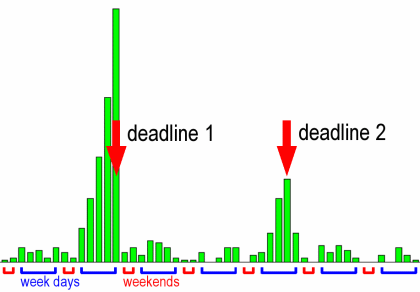Advices for Organisers
How to organise a large conference? If you organise a conference for the very first time, we would like to share some experiences that you may find useful.
First, perhaps obvious: there is no facility that may do more for success of your conference than personal involvement of the Organisers. In other words, technical excellence that Conference Engine offers will certainly boost, but not constitute your success. We estimate that fluency of information flow increases number of participants by 20-30% and overall impact of the paper published by 50-300%. That's a good interest but not a capital.
As it is clear that nothing will replace your well developed personal contacts in pre-registration period, next we make few remarks about technical details. Our primary recommendations are:
- simplicity of registration procedure
- well-thought-out deadline policy
- well-balanced early registration discounts
- well time-spotted, but not annoying, e-mail reminders
- immediate fixing things up
Simplicity of registration procedure means, that there should be just one registration step. All kinds of "preliminary registration" give no benefits, it makes a simple thing difficult to explain instead. Participants like to clearly know their status, otherwise they will ask: am I "registered enough" or not? So, one registration, one username, one password.
Clear deadline policy enables participant to project his/her timetable. It must be clear when he/she really has to pay or withdraw registration. Early registration deadline should not be moved. Payment deadlines are established to maintain attendance predictable, therefore you may release conditions only when you assured the attendance in other way. So, you may allow for exceptions in personal contact only - do not post such a possibility!
Contradictory, abstract submission deadlines shall not be too stiff. It is almost a rule, that abstract deadline is extended. You may abandom this approach in (unlike) case that your participant list is heavily overpopulated. Normally, Organisers tend to allow maximum number of submissions in order to excite competition and elevate scientific level of the event.

To optimize submissions, you need to know submission dynamics around deadlines. Typical registration traffic is plotted above. Number of submission usually starts to rise about 4-5 days before deadline, has its maximum a couple of hours before deadline, then relaxes within 1-2 days after deadline (if those days are work days). Quite many people send abstracts "just" after deadline. Second deadline shall be not earlier than 10-20 days after first one: people might be in travel or vacations. About 2+ weeks is usually an optimum. At the second deadline you may expect about 30% of the first pool. Financially, second deadline pays off costs of printing of conference materials, full Conference Engine support, coffee breaks and snacks (people often withdraw registration if their abstract is not published).
Early registration discounts, together with early payment deadline allow to predict and start to collect the conference budget. It is important to collect most money well before the conference starts since first spendings arise well in advance. No-shows are serious danger for both: finances and science (vacated oral presentations). In order to avoid these problems you need to convince people to pay in early. Usually 20% discount does the job. It is good when discounted amount (say $50) equals to fee for an optional attraction (e.g. conference dinner). An association "diner for early registration" need not be explicitly expressed, but should be clearly noticable.